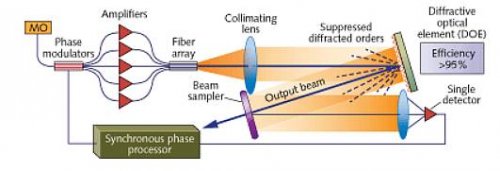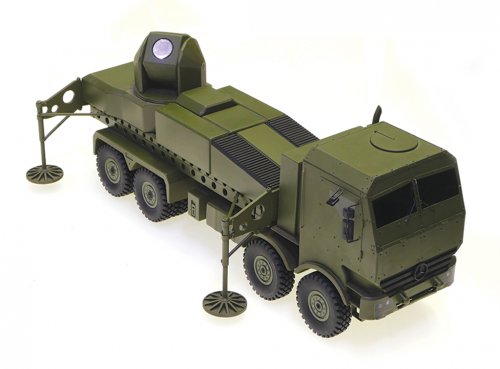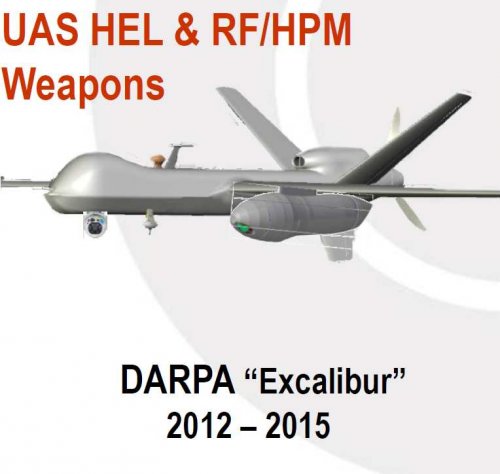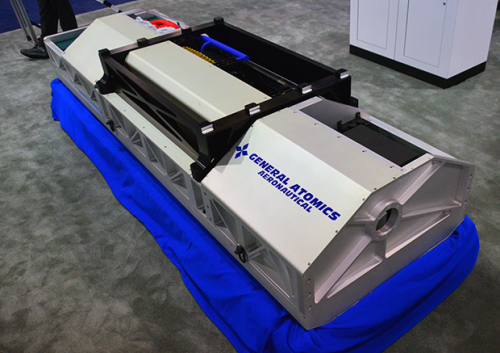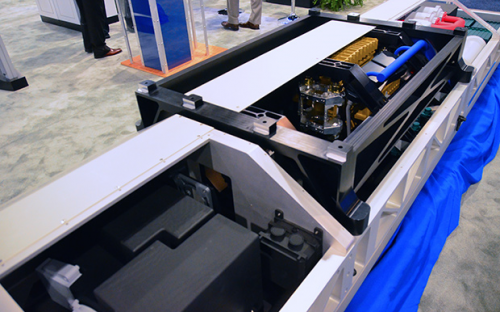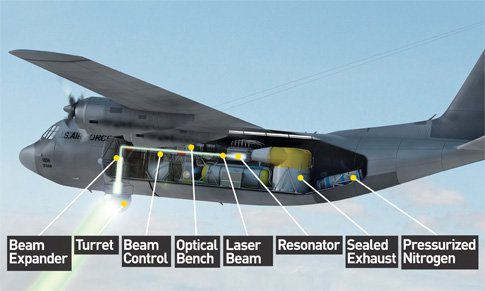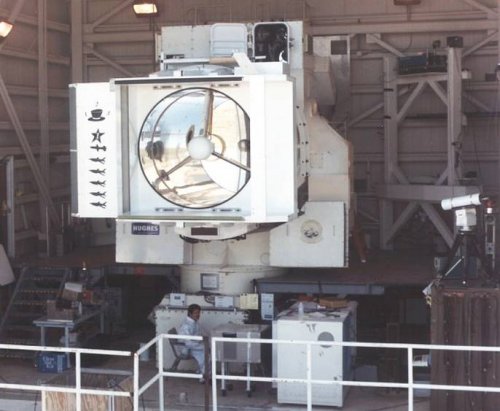http://aviationweek.com/defense/lasers-technology-targets-mini-uavs?NL=AW-05&Issue=AW-05_20150402_AW-05_770&YM_RID=%27email%27&YM_MID=%27mmid%27&sfvc4enews=42&cl=article_2
Lasers Technology Targets Mini-UAVs
Aviation Week & Space Technology - Defense Technology Edition
Bill Sweetman
Thu, 2015-04-02 04:00
Mini-UAV threat creates need for practical lasers
Two German teams are working on a military-funded program that could lead to a world first: an operational air-defense laser. Whether one or both succeed depends on whichof two concepts works well enough to earn a place on the front line.
While Rheinmetall and MBDA Germany use some of the same technology (both companies featured their laser work at February’s IDEX defense show in Abu Dhabi), they take dissimilar approaches to one of the fundamental challenges of using the laser as a weapon: putting a tightly focused dot of energy on target. It is easy to concentrate on the output power of the laser, and many current and historic projects are aimed at new technology for beam-generation (AW&ST Feb. 16-March 1, p. 30).
But getting enough heat on a target to damage it means having high power, focusing it on one spot and keeping it there as the target moves. Good performance means the weapon can be effective at lower power levels. That is the goal of German research, because it offers the prospect of a true laser weapon using inexpensive and reliable commercial laser sources.
This development parallels another trend: the emergence of a serious military threat that may be vulnerable to a laser weapon. Mini unmanned aerial vehicles (UAVs) provide real-time target tracking, location and strike damage assessment for artillery or rocket attacks, and can act as precision-guided weapons against high-value targets. Not only are they hard to hit with missiles or gunfire, but using missiles against a mini-UAV is expensive.
That is why one Rheinmetall laser engineer uses a €1 coin ($1.05) to make a point about the company’s weapon. “This is the size of the beam on the target at 1,000 meters (3,300 ft.), and it’s also what one shot costs.”
Both companies base their systems on commercial fiber-laser modules. These are used in manufacturing for metal cutting and welding, and are efficient, inexpensive and reliable. The laser energy passes through a fiber-optic cable from the beam-former to the optical unit, a good factor for vibration and shock resistance. Germany also leads the industrial laser market. Today, standard laser modules come in 10- and 20-kw versions, which are not enough for a weapon, so the key is the use of optical systems to combine and focus multiple lasers on one spot.
The main difference between the MBDA and Rheinmetall approaches is that MBDA uses reflective optics and Rheinmetall uses lenses.
The advantage of mirrors, MBDA argues, is they absorb less energy than lenses, so the optical system can be driven to high power levels without fundamental change. Although tests in 2012 and 2013 used four 10-kw laser modules, the current system easily could go to 80 kw with standard modules. “We are also working with industry on alternate source technologies,” says one engineer, adding that with the right coating technology, “100-150 kw is not a problem.”
Rheinmetall accepts the power limitations of lenses (although its optical system could run to twice its current power) but says the lens-based optical system is easier to focus and adjust. In its fixed-site/naval demonstrator system, using the same mount as the Mantis counter-rocket, artillery and mortar gun system, three laser projectors are fixed to the trunnion in place of a gun barrel. Internal movements of the optics are used for fine aiming, to focus beams on target and converge the three beams on the same spot at the target’s exact range.
This has an incidental advantage: The beams diverge beyond the target, so the eye-safety range (the distance beyond the target that has to be confirmed free from people or manned aircraft) is shorter. The potential is also there to use multiple laser turrets against a single target to gain range or achieve a quicker kill.
The 20-kw ceiling on commercial lasers is economical as much as technical. Industrial users are not calling for greater power, and the defense market, so far, is tiny.
Solutions to engineering challenges —packaging the system and providing power and cooling—also are underway. MBDA is considering flywheels as alternatives to batteries: The key in either case is to provide instant full power.
Executives note that the laser offers a graduated response against a loitering UAV: damaging the sensor, dazzling (which, because of the potential to blind a pilot, is not a legal option against a manned aircraft) or destruction. Sensor, dazzling can be effective at very long range. The optics also can be used for long-range identification, complementing the weapon’s ability to deliver a discriminating response.
A Rheinmetall engineer says mini-UAVs are also a concern for event protection, and a laser can disable or destroy a threat within a 1-km (0.6-mi.) radius.

